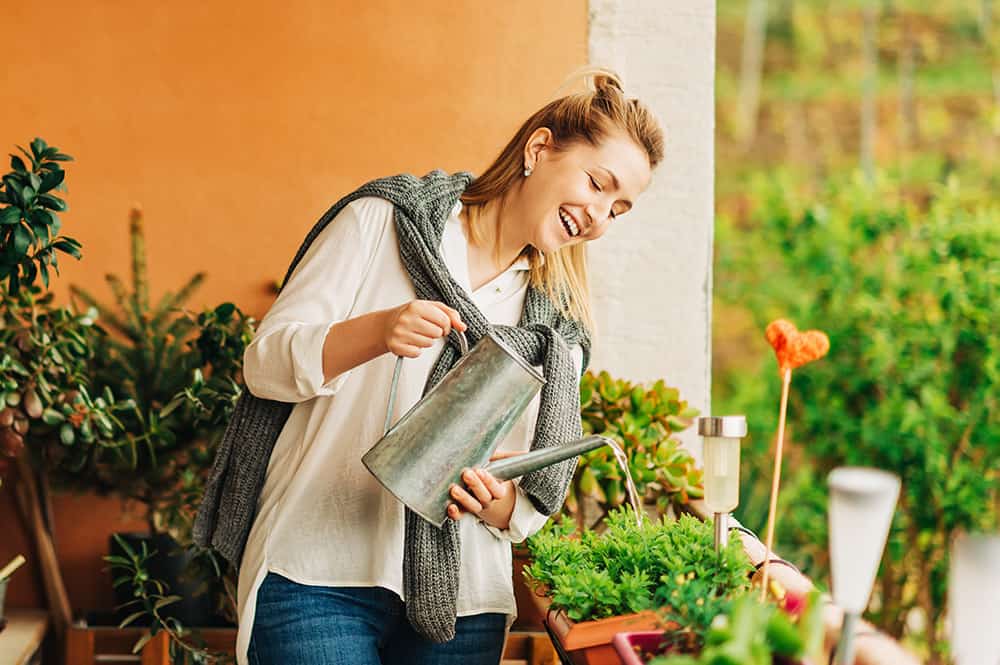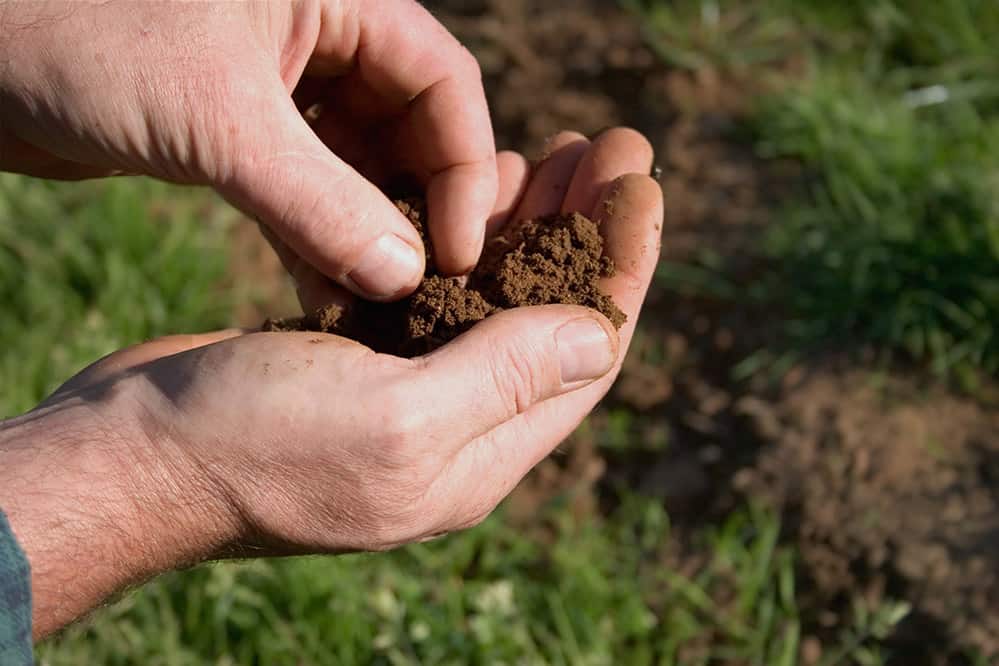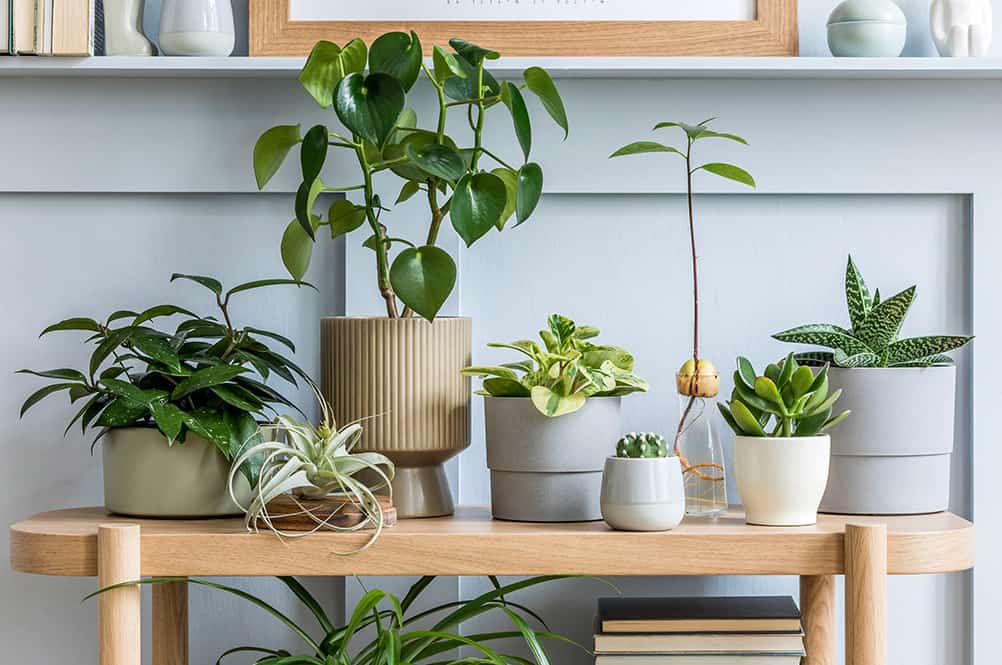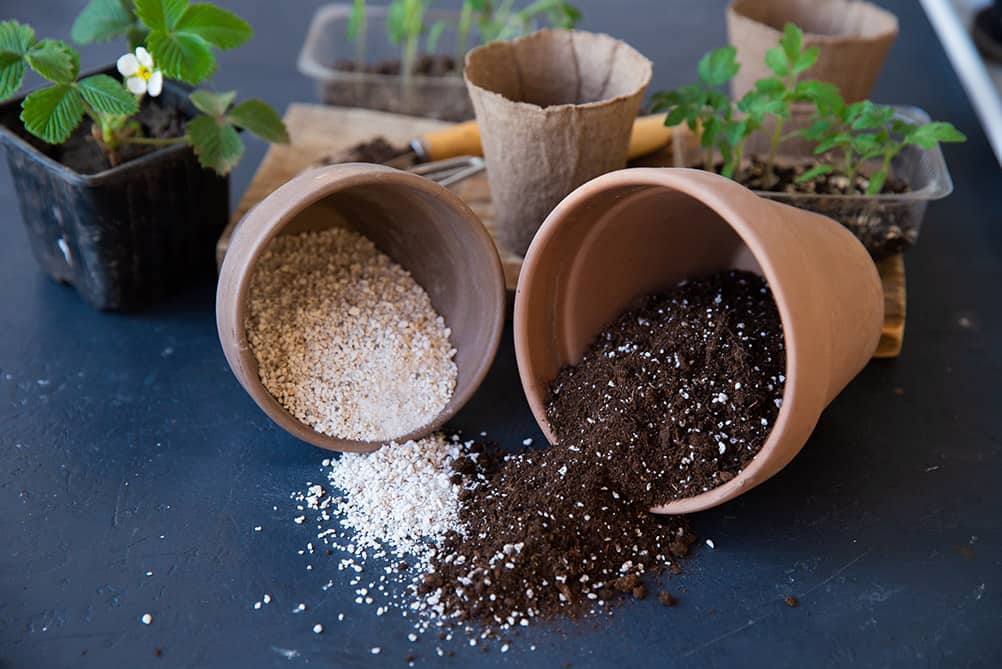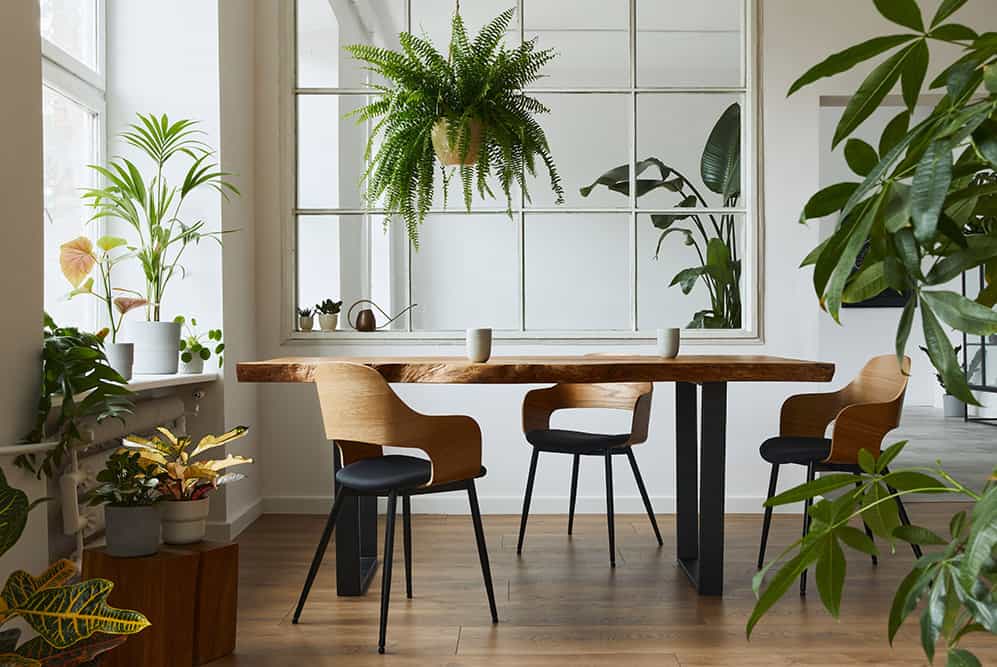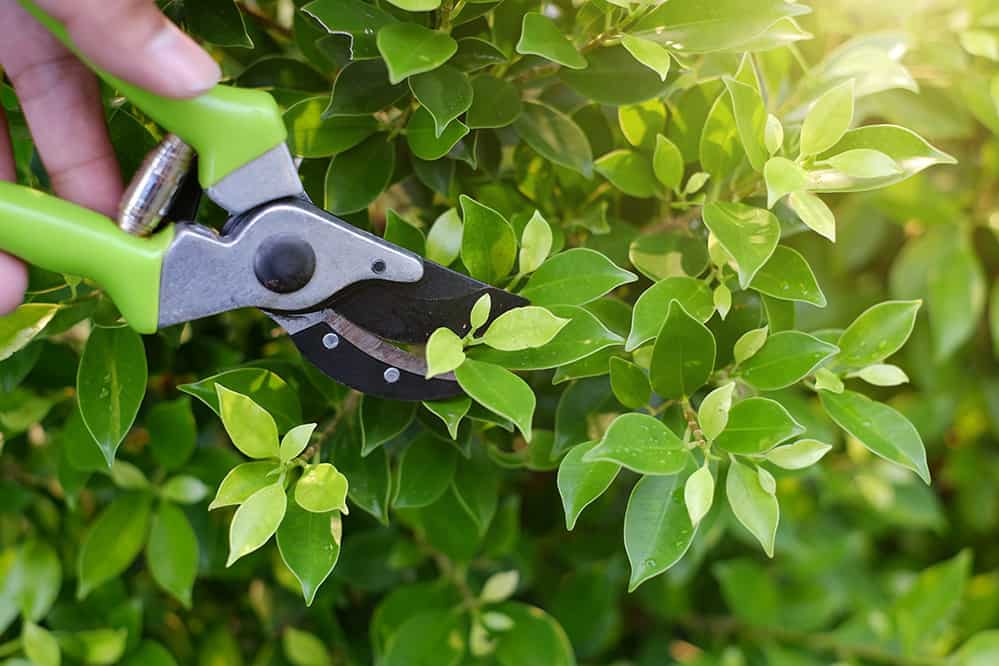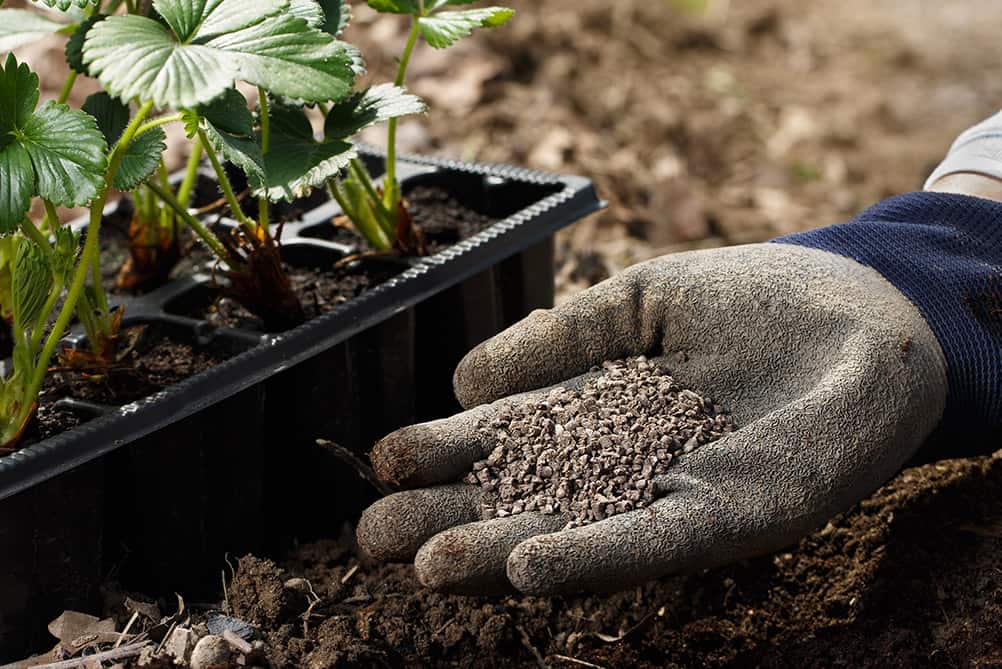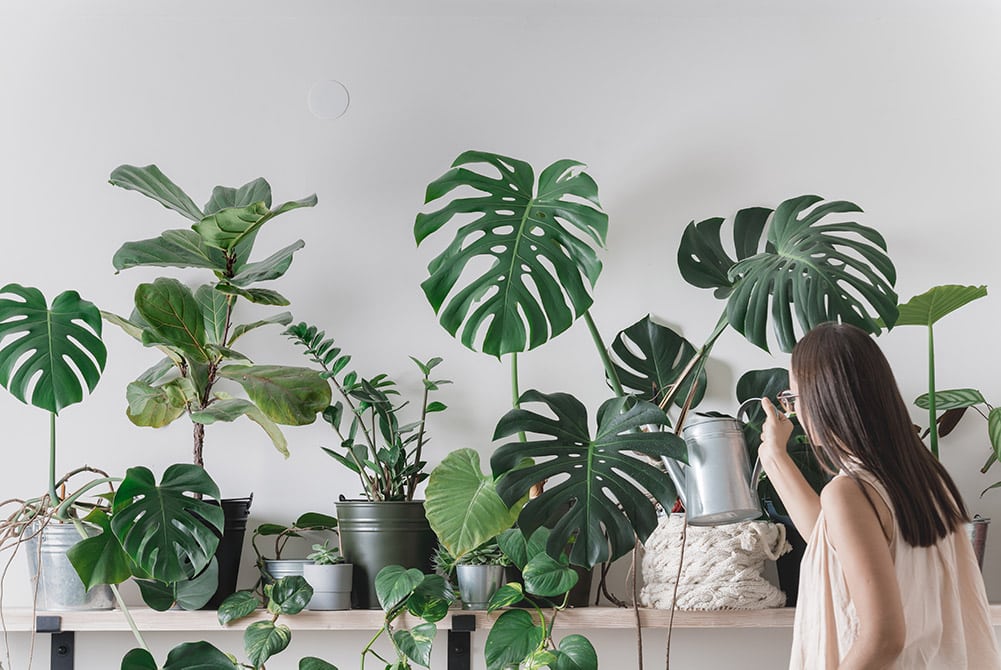How To Care For Indoor Plants
Indoor plants are an amazing addition to any home or office. They’re scientifically proven to improve the quality of the air surrounding you, improve your mental health, and can actually increase productivity in offices and learning environments.
And, of course, plants just instantly lift the aesthetic of your space. So, you might be wondering how to keep your indoor plants healthy.
How often to water indoor plants
It’s so important you don’t underwater or overwater your plants. In fact, one of the top reasons indoor plants die is their watering habits — usually overwatering.
Feel the soil to determine if the plant needs watering
There are a few rules of thumb when it comes to watering your plants. Of course, the best course of action is to follow the tag on the plant or to just Google how often your plant likes a drink.
Typically, indoor plants prefer to be watered every seven-ish days in the summertime and every 10 or 11-ish days in the wintertime.
The air is dryer in winter, which makes it more tempting to water your plants more often. However, the soil beneath will hold onto moisture for longer in the cooler months.
The best way to determine whether your plants need watering is to put your finger into the soil to your knuckle’s depth. Don’t give it more water until the soil is dry to the touch.
Choose the right pot for your indoor plants
When you’re choosing pots and planters, their appearance is a big consideration. Their functionality needs to take precedence here though. Your pot should have plenty of drainage and come with a saucer to catch that excess water.
It should not be porous — the pot should be sealed to prevent leakage into the soil and roots. The pot needs to be light enough to carry as well. Self-watering pots are an amazing solution for the busy (or lazy) gardener too!
Another thing to keep in mind is that your plants will need to move into new homes every two to three years. Repotting them into a slightly larger pot is ideal to allow their roots to keep growing.
Remember to only repot your plants in the springtime to avoid shocking your plants.
If you’re really committed to using fancy and decorative pots that aren’t so functional, keep your plant in its original plastic, nursery container inside the fancy pot.
Premium potting mixes are best
The quality of your soil is really important for your plants. A premium potting mix is always best for indoor plants, but it’s worth noting that there are plant family-specific varieties of potting mixes, like cactus and succulent mixes.
These will have the correct nutrients and properties for their respective plants.
A premium potting mix will have really good drainage properties and contain all the right nutrients for your plants.
Get the lighting & their home just right
Lighting is a big one! Most indoor plants won’t enjoy direct sunlight. A lot of our favourite indoor plants like monsteras, fiddle leaf figs, and peace lilies have leaves that will burn in direct sunlight.
Burnt leaves will often show up yellow or a very obvious brown. Plants like peace lilies and calatheas will even thrive in low-light areas. But it’s important to note that low light doesn’t mean no sunlight at all.
Work out what kind of lighting your plants thrive in and position them accordingly. Remember, plants hate change. So, if you’re planning to reposition your plant, give them an hour’s long visit each day to help them acclimatise to their new home.
You have to prune your indoor plants to encourage growth
Pruning your plants is the equivalent of a haircut for humans. Dead or burnt leaves will bring the rest of the plant down and attract pesky bugs and pests and offer them hiding spots.
It’s best to prune these dead stems and leaves as they delay growth. Pruning encourages new growth for your plant.
Feed your plants regularly
Indoor plants will sometimes need extra nutrients than those already in their potting mixes. To help your plants thrive, you can use a typical fertilizer or a liquid fertilizer, often called plant food.
You can also put some slow-release fertilizing granules into the soil when you repot your plants. Or, you can give them some of that liquid plant food every second water or so. Just be sure to follow the plant food’s instructions.
Feeding your plants seriously encourages growth and can encourage flowering in some plants.
Here are the easiest plants to care for
When thinking of the easiest and most low maintenance smaller indoor plants, cacti and succulents are the first that come to mind. These plants, along with aloe vera, basically thrive on neglect. They’re typically quite happy in a nice sunny spot with limited watering.
As well as those though, peace lilies are extremely forgiving plants. They thrive in low light and while they do prefer more watering than the average house plant, they easily bounce back from the brink of death when they do get a drink.
Devil’s ivy is another amazing small plant for beginners. It’s so difficult to kill it’s actually considered a weed in many locations.
As for bigger floor plants, you can’t go past a monstera deliciosa (AKA a Swiss cheese plant) or mother in law’s tongue (AKA a snake plant). These are both plants that love low light levels and dryer air.
—
These are all the best ways to care for your indoor plants. Ready to add a healthy dose of plants into your office? Let’s get started today!


